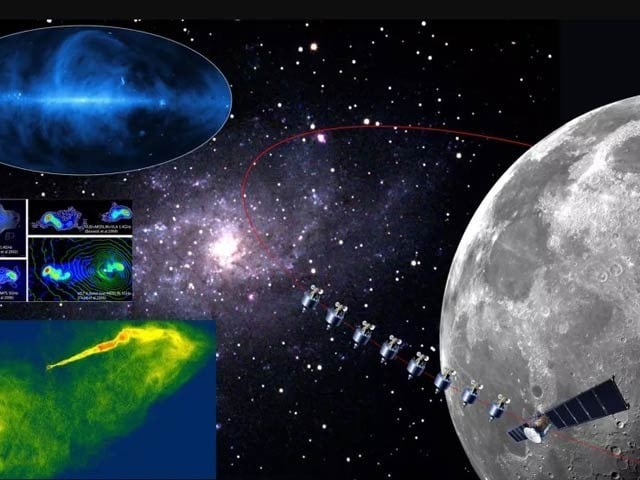
Chinese experts plan to launch radio telescope satellites into lunar orbit in 2026. Photo: Space.com website
Beijing: China has said that by 2026 it will launch satellites carrying radio telescopes into lunar orbit, and is expected to open new avenues for astronomy.
Although these will be small satellites with one central and eight smaller satellites sent into orbit around the moon. According to Chinese officials, it will be possible to see the most distant radio signals in the universe. For this, the data from the smaller telescopes will be transmitted to the main telescope. The data will then be collected there and sent back to Earth.
Xulai Chen of the China National Space Administration (CNSA) said that it is better to send telescope satellites into pollution-free lunar orbits than to build an observatory on the moon. They are inexpensive and simple to make.
The project is named ‘Long Wavelength Astronomical Discovery’ or Hongmeng Project. According to the experts, the lunar telescopes will be able to see the unseen corners of the universe more deeply and thus our knowledge will increase exponentially. Due to the atmosphere and other pollution on Earth, this radiological observation is not possible and that is why the Moon is an excellent place to observe it.
According to experts, this is expected to help in understanding the oldest radio waves that appeared just after the Big Bang. It should be noted that Chinese experts have also conducted its experiments on two experimental satellites, Longjian I and II. But now it remains to be seen how this project will come to fruition.
(function(d, s, id){
var js, fjs = d.getElementsByTagName(s)[0];
if (d.getElementById(id)) {return;}
js = d.createElement(s); js.id = id;
js.src = “//connect.facebook.net/en_US/sdk.js#xfbml=1&version=v2.3&appId=770767426360150”;
fjs.parentNode.insertBefore(js, fjs);
}(document, ‘script’, ‘facebook-jssdk’));
(function(d, s, id) {
var js, fjs = d.getElementsByTagName(s)[0];
if (d.getElementById(id)) return;
js = d.createElement(s); js.id = id;
js.src = “//connect.facebook.net/en_GB/sdk.js#xfbml=1&version=v2.7”;
fjs.parentNode.insertBefore(js, fjs);
}(document, ‘script’, ‘facebook-jssdk’));



